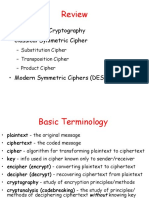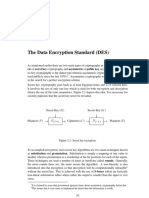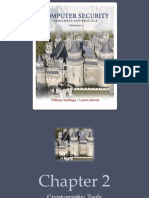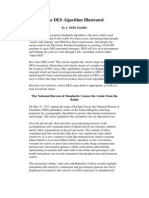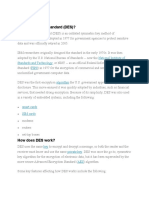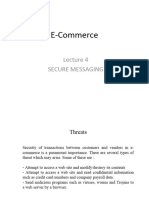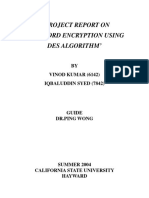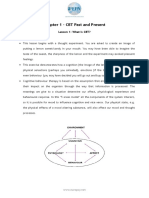DES (Data Encryption
Standard)
Dr. Deepamala N
�Introduction
• The DES (Data Encryption Standard) algorithm is the most widely used
encryption algorithm in the world.
• Used in government and banking
• Has a version called “Triple-DES.“ Triple DES you use three DES
encryptions with three separate keys. Managing three keys is more
difficult
�• In 1972 the NIST decides to assist in the development of a secure method.
• NIST was called the National Bureau of Standards.
• May 15, 1973 NBS published a notice in the Federal Register soliciting
proposals for cryptographic algorithms to protect data during transmission
and storage.
• It received none until August 6, 1974 from IBM.
• The NSA and the NIST National Institute of Standards and Technology
played a substantial role in the final stages of developing DES.
• The NBS adopted a modification of the IBM LUCIFER algorithm as the new
Data Encryption Standard (DES) on July 15, 1977
• DES was quickly adopted for non-digital media, such as voice-grade public
telephone lines.
• The banking industry, which is the largest user of encryption outside
government, adopted DES as a wholesale banking standard.
• AES (Advanced Encryption Standard) replaces DES in October 2000
Rihndael.
�DES: Data Encryption Standard How it
Works
• It is a block cipher that encrypts data in 64 bit blocks.
• It takes a 64-bit plaintext input and generates a corresponding 64-bit
ciphertext output.
• The main key length is 64-bit which is transformed into 56-bits by
skipping every 8th bit in the key.
• It encrypts the text in 16 rounds where each round uses 48-bit
subkey.
• This 48-bit subkey is generated from the 56-bit effective key.
• The same algorithm and key are used for both encryption and
decryption with minor changes.
��• The initial and final permutations are straight Permutation boxes
(P-boxes) that are inverses of each other. They have no cryptography
significance in DES.
• Round Function - The heart of this cipher is the DES function, f. The
DES function applies a 48-bit key to the rightmost 32 bits to produce a
32-bit output.
�• Initial key first go through Permuted Choice 1 (PC-1) which reduces
the key to 56 bits. In PC-1 every eighth bit in key is discarded. That is
bit positions 8, 16, 24, 32, 40, 48, 56, and 64 are discarded.
• Key shifting
• The PC-2 selects and arrange 48 bits out of the 56 to form the round
subkey (Ki). These 48 bits are selected on the basis of a predefined
table
���A public-key encryption scheme has six ingredients
■ Plaintext: This is the readable message or data that is fed into the
algorithm as input.
■ Encryption algorithm: The encryption algorithm performs various
transformations on the plaintext.
■ Public and private keys: This is a pair of keys that have been selected
so that if one is used for encryption, the other is used for decryption.
The exact transformations performed by the algorithm depend on the
public or private key that is provided as input.
■ Ciphertext: This is the encrypted message produced as output. It
depends on the plaintext and the key. For a given message, two
different keys will produce two different ciphertexts
■ Decryption algorithm: This algorithm accepts the ciphertext and the
matching key and produces the original plaintext.
�����• It means that only people with the right permission can access the
information transmitted and that this information is protected from
unauthorised access at all stages of its lifecycle.
�• Authentication is the act of proving an assertion, such as the identity
of a computer system user.
��������RSA
����Computational Aspects
EXPONENTIATION IN MODULAR ARITHMETIC
Use Fast Exponentiation
��������Timing attack
��Fault Based attack
�Diffie- Hellman Key Exchange.
The Diffie-Hellman Key Exchange is a means for two parties to jointly
establish a shared secret over an unsecure channel, without having
any prior knowledge of each other.

















